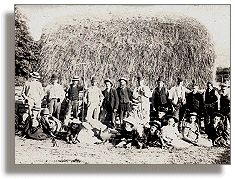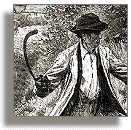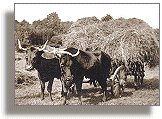This page gives a little more background information on some of the old hand-tools and methods which were in use for much of the Victorian age.
Although steam powered machinery came into use on the larger farms and estates, old ways such as horse-ploughs were still used in places long after the death of Queen Victoria.






